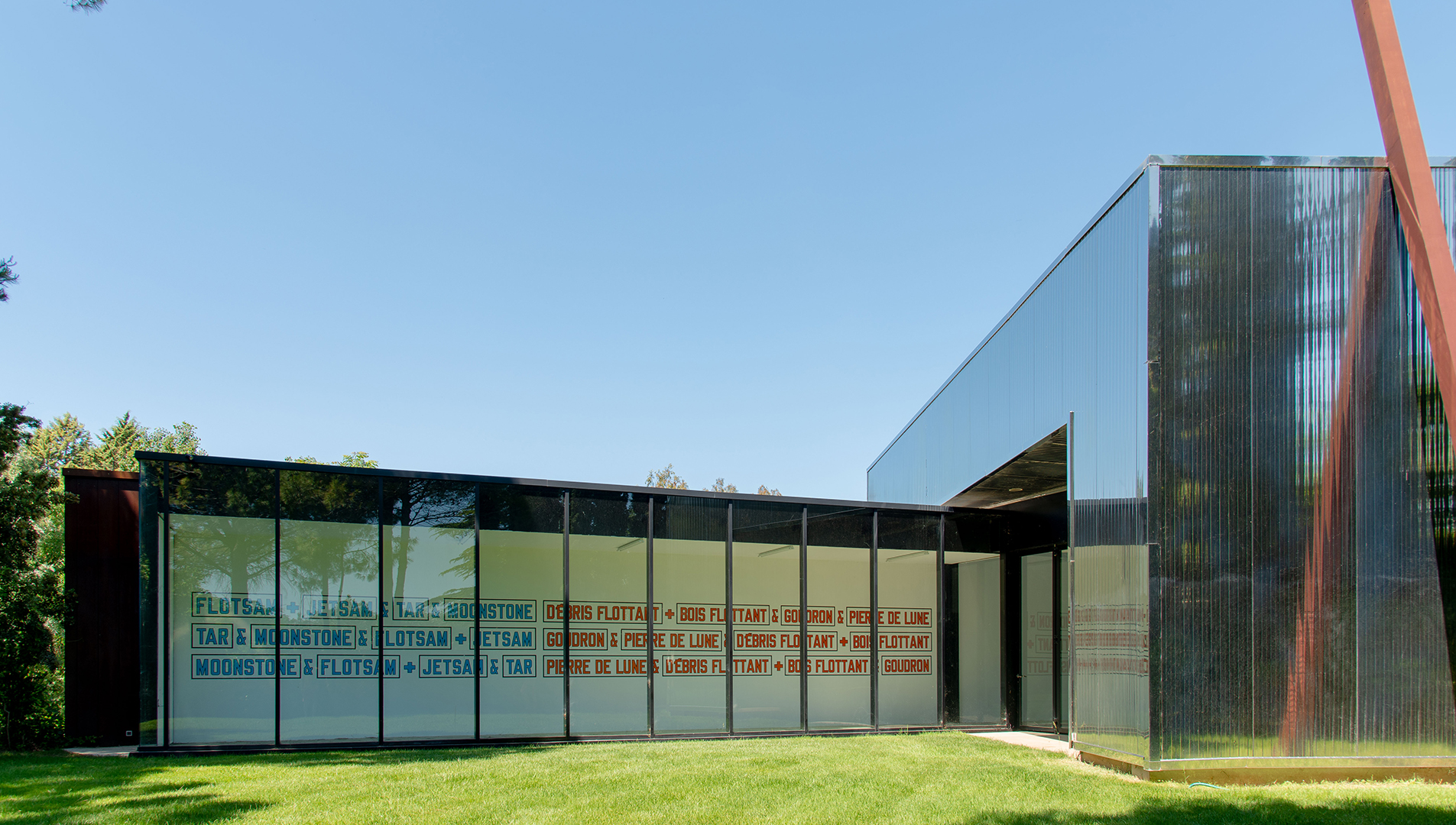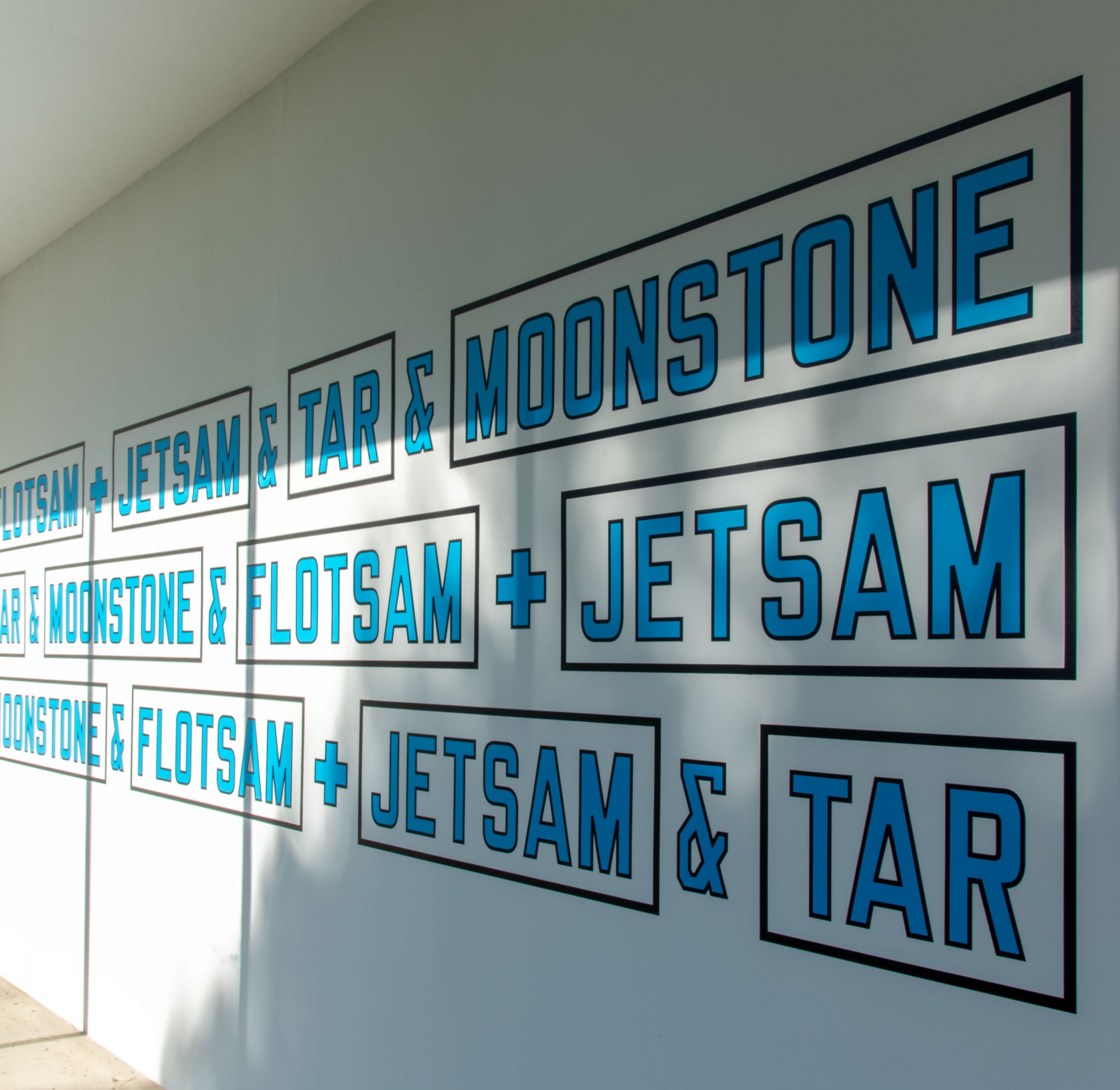LAWRENCE WEINER
Over the summer 2020, the Venet Foundation was proud to present in Le Muy (Var) a new installation by the artist Lawrence Weiner.
The new piece by the American artist is adapted to a visit that is solely focused on the outdoor areas in response to the exceptional health measures that have been put in place. Conceived for the site, the statement Lawrence Weiner has come up with for the Venet Foundation is installed inside the long glass-walled gallery yet is completely visible from the sculpture park. Weiner’s statement has become a key to the park display.
Visitors will discover or rediscover the work making up the sculpture park, including monumental pieces by artists represented in the collection, such luminaries as Richard Long, Larry Bell, Tony Cragg, Sol LeWitt, Robert Morris, Sir Anthony Caro, Phillip King, Arman, Richard Deacon, and Ulrich Rückriem, as well as Bernar Venet, whose sculptures for the Palace of Versailles show in 2011 have been put on view in a collapse-based reinstallation. The Stella Chapel, created on site by Frank Stella for the Foundation’s 2014 inauguration, brings together six of his large reliefs. Visitors will be able to see the Chapel along with James Turrell’s permanent installation called Elliptic Ecliptic, which is part of the series of Skyspaces.
The 7 hectares dedicated to conceptual art and Bernar Venet’s installations allow visitors to enjoy an exceptional display in a natural setting of extraordinary beauty in the heart of Provence.
The pandemic lockdown brings back a practice inherited from conceptual art<
The conditions for preparing the exhibition have also been transformed since things were done via telephone and digital communications. Because of the pandemic and the subsequent confinement, workarounds took shape to help design and put together exhibitions, breathing new life into practices that presided over the birth of conceptual art in the 1960s. What comes immediately to mind, for example, is Art by Telephone at the Museum of Contemporary Art Chicago (1969), in which Jan van der Marck invited the featured artists to call in their instructions based on the model of László Moholy-Nagy’s paintings by telephone from 1923 (the exhibition catalogue did not show completed paintings but consisted of a vinyl record containing the different instructions). But there is also the Mel Bochner show from 1966 Working drawings and other visible things on paper not necessarily meant to be viewed as art; Lucy Lippard’s Numbers exhibitions (including 557,087 at the Seattle World Pavilion and 955,000 in Vancouver in 1970); Seth Siegelaub’s shows and works, Xerox Book, July, August, September 1969; and Bernar Venet’s show at the Templon Gallery in 1971. He hadn’t seen the works, which were created at a distance, and did not go to the show itself. All of the works in the exhibition involved proposals that had been communicated from a distance. It is worth recalling here that this possibility of creating a work of art for a specific site according to a protocol and without the artist’s intervention – a practice that spread far beyond its original birthplace – constitutes a contribution of conceptual art to the meaning of the historic movement, which appeared in New York in the late 1960s.

